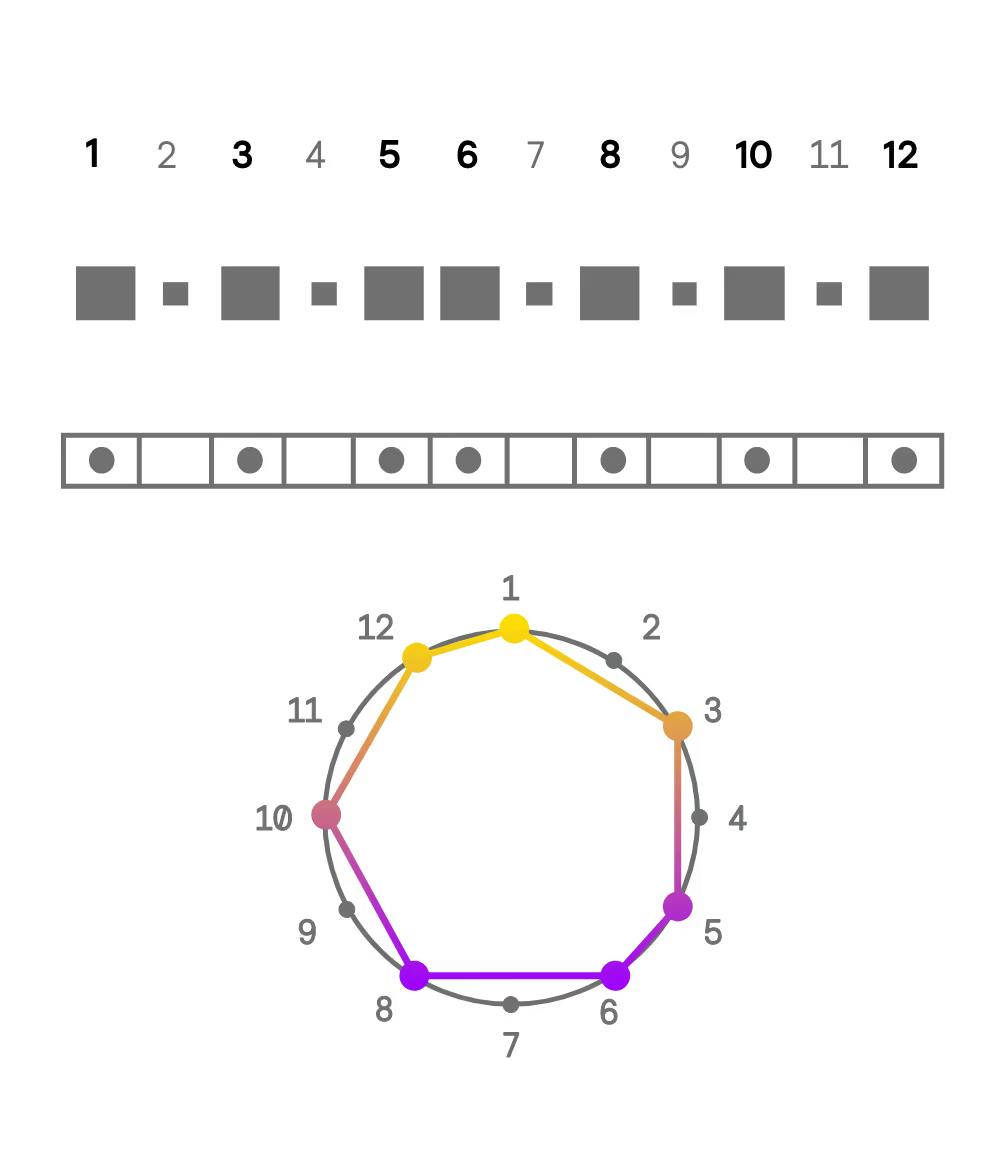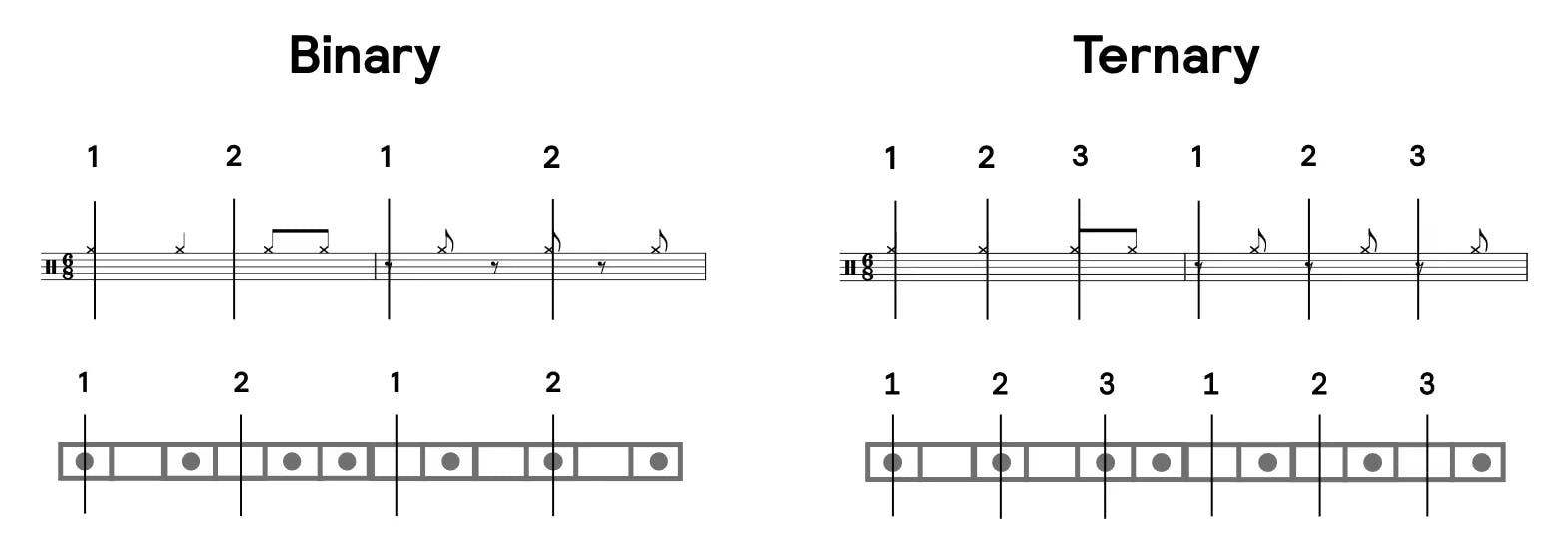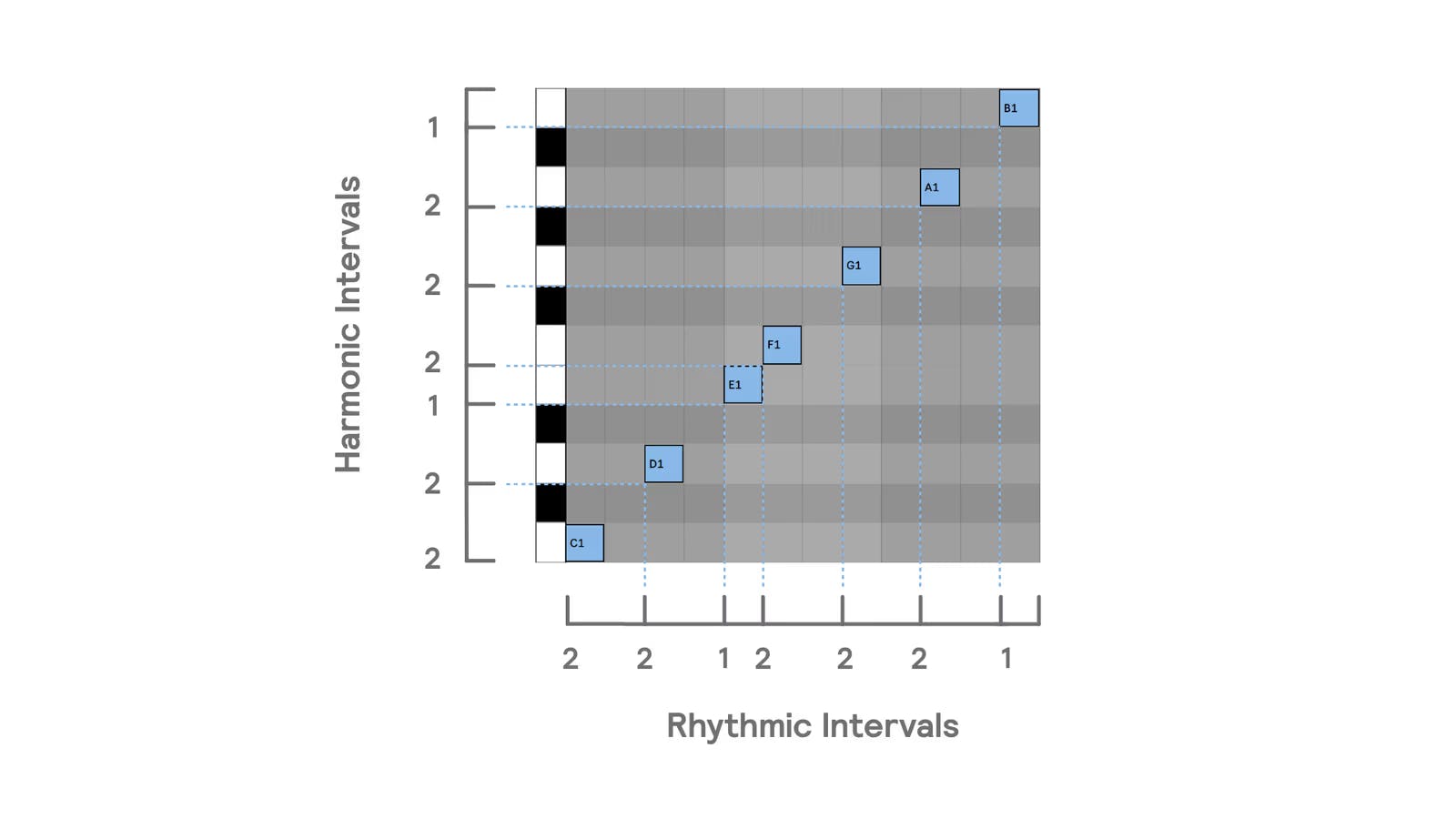Introducing Mixed Bag, a series of musings on drums/rhythm that might not necessarily relate to Sensory Percussion, but we think are worth sharing nonetheless. A typical Mixed Bag post might explore the history of a certain groove, the effect that a piece of gear had on popular music, or really anything that we think Sensory Percussionists might find interesting! For the first entry in the series, we're diving into the rhythmic worlds of bembé, and trying to figure out what about this pattern makes it so hypnotic.
What's So Special About Bembé?
As drummers, we can sometimes get stuck thinking in groups of 4, 8, 16, or 32 measures, each divided into groups of 4 quarter notes or 8 eighth notes per measure. So in an effort to expand horizons, we're going to take a look at the chameleon-like rhythm called bembé. It's a 12-note percussive pattern that has the ability to shift between binary and ternary pulses. This rhythmic elasticity allows bembé to seemingly morph into a new pattern at will, depending on its relationship to other musical elements. So, first off, what exactly is bembé?
Basics of Bembé
Bembé comes from the Yoruba people of West Africa. Depending on the context, the term “bembé” can refer to one of many things: a type of drum, an ethnic subgroup, a religious ceremony, a style of dance, a genre of music, a wooden platform...you get the idea. For the purposes of this post, when we say "bembé", we're referring to one specific rhythmic pattern, traditionally played on a bell. Many of the dances and subgenres that share the name bembé are centered around this pattern. In western notation, the pattern looks like this:

Drum Set Applications
Like many Afro-Cuban grooves, when the traditional bembé groove is adapted for drumset, it's merely an approximation of multiple parts that are traditionally played by different percussionists (congas, bells, shakers, etc.) The typical groove for drumset is notated as follows:

By the way, all the sounds you hear in these examples were recorded using Sensory Percussion with kits from the King Klavé soundpack.
Visualizing Bembé
Bembé can be counted as two measures of 6/8 or one measure of 12/8. The pattern itself has 7 played notes, which means the other 5 beats are rests. The space between these 7 notes follow the pattern: 2-2-1-2-2-2-1
For those of us who don't read music, there are plenty of other ways to notate this bell pattern, many of which are more visually intuitive:
 Caption: Four different ways of notating the same pattern (the clock is our favorite).
Caption: Four different ways of notating the same pattern (the clock is our favorite).
The trickiest part of playing bembé is repeating the pattern, since there is no rest between the last note and the first note. Try clapping it slowly at first and watch out for this transition between each cycle.
Binary vs Ternary Pulse
Part of what makes bembé so appealing is that it can be felt in either a binary (groups of 2) or ternary (groups of 3) pulse. This is because there's an inherent "2 against 3" polyrhythm built into the pattern. Below, you can see and hear the difference between the two kinds of pulses. The bell pattern stays the same in both examples, but seems to take on a new character as the feel switches from 2 to 3:

Rhythmic vs. Harmonic Relationships
Now, to illustrate an important point about bembé, let's try messing with these visualizations from before. What if instead of large and small squares, we write the pattern as 12 rectangles of the same size, with each emphasized beat filled in and each rest empty? Like this:

Ok, looks cool, but it expresses pretty much the same thing as the squares. Big whoop. But what happens when we invert the colors so that the emphasized beats are white and the rests are black? That would look like this:

Starting to look familiar? Well, just in case you're still wondering what the point is, let's make the rests (black rectangles) a bit smaller and squish everything together. That would look something like this:

That's right, it's a piano! One octave of a piano to be exact. So what does that mean? It means that bembé is isomorphic with the diatonic scale. And what does that mean? It means that the time intervals between each beat of bembé follow the same pattern as the pitch intervals of the diatonic scale. That pattern is 2-2-1-2-2-2-1 (or whole-whole-half-whole-whole-whole-half).
That means the rhythm of bembé is naturally built into every piano! If you ever forget the pattern, you can just look at a keyboard, play through the octave starting on C treating all black notes as rests, and you'll be playing bembé!

For all the Ableton users out there, here's the diatonic scale with bembé rhythm programmed into Ableton's piano roll. In this example, the horizontal rhythmic intervals (time) between each beat are the same as the vertical harmonic intervals between each note. They both follow the pattern 2-2-1-2-2-2-1
This isomorphism between bembé and the diatonic scale would seem to indicate that this pattern naturally appeals to our brains. Because it has so many divisors, different pulses work over top of it, and you can subtly create musical tension by switching back and forth between them without changing the pattern.
Further Listening
Here are a couple of well-known songs that feature bembé. See if you can hear the pattern and clap along:
